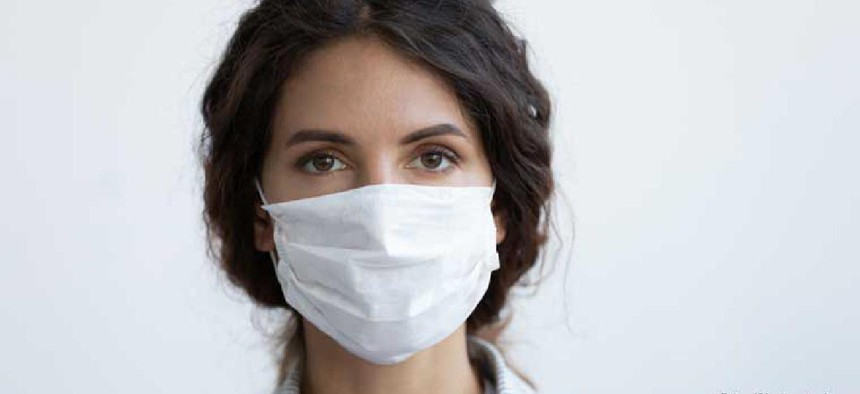Facial recognition adapts to a mask-wearing public

With more people wearing masks to prevent the spread of the coronavirus, facial recognition developers are building datasets of images featuring masked faces and upgrading existing solutions.
With more people wearing masks to prevent the spread of the coronavirus, facial recognition developers are adapting, building datasets of images featuring masked faces to develop and train facial identification and recognition algorithms and upgrading existing solutions.
In April, researchers posted an image dataset to GitHub featuring 1,200 pictures culled from Instagram selfies. They tagged the images to identify people wearing medical masks, non-medical masks or no mask to support creative solutions for COVID-challenged facial recognition problems.
"The goal and the intention was to help any data science or machine learning engineers who are working to fix this issue and help with public safety," Wafaa Arbash, CEO of AI startup Workaround, told CNet.
Researchers at Wuhan University in China compiled and posted to GitHub a larger dataset that consists of 5,000 cleaned and labeled images of masked faces of 525 different individuals, along with images of 90,000 unmasked faces.
Based on the masked face dataset, developers will be able to build face detection and recognition algorithms to help identify people wearing masks traveling in and out of communities or facilities that require identity verification. Additionally, they said, facial security checks at train stations and other checkpoints can be upgraded to detect pedestrians wearing masks. Based on the constructed datasets, the eye-focused masked face recognition model they designed and trained has an identification accuracy over 95%, they said.
To expand the pool of masked faces that machine learning systems require for training, the researchers also built simulated masked face recognition datasets, putting masks on the faces in the public face datasets, giving them 500,000 masked faces of 10,000 subjects to work with.
That’s the approach the National Institute of Standards and Technology is taking. NIST said it will use software to digitally apply synthetic masks to faces and then run tests to quantify the accuracy of facial recognition systems when they’re verifying and identifying people wearing masks.
Leveraging its massive facial recognition datasets used for the Face Recognition Vendor Test, NIST and plans to test existing facial recognition algorithms against the masked images and invites vendors to submit new algorithms that claim to handle masks. After quantifying the effect of masks on both false negative and false positives match rates, NIST said it will issue a public report.
Meanwhile, commercial firms are enhancing their existing technology to identify people wearing masks.
Japan’s NEC, which provides the facial-recognition technology used by Customs and Border Patrol at U.S. airports, has launched new rounds of testing now that masks are more common. According to Benji Hutchinson, a vice president with NEC’s U.S. division, the company’s algorithms have always tested on face masks because they are commonly worn in Asia during flu seasons. “Masks are nothing new to us, but that doesn’t mean it’s all perfect,” Hutchinson told Wired. He said NEC is advising customers, such as CBP, to make their own decisions about the technology for now.
Another NEC biometric authentication device scans not only the faces of users, but also their irises, according to a report in Japan Times. The rate of error is said to be under one in 10 billion, and the scan only takes around two seconds, according to the Tokyo-based electronics company.
Sensory, a Silicon Valley artificial intelligence firm, announced that its TrulySecure face and voice biometric fusion platform has been adapted to recognize users wearing masks and accurately detect coughs and sneezes. It combines both face and voice biometrics into one software development kit so developers can leverage both to address challenges such as face masks or noisy environments. When faces are partially obstructed, the voice biometric provides the supplemental data. Alternatively, when used in a noisy environment, the voice biometric is enhanced with a facial recognition score. Developers can leverage both face and voice biometrics in real-time to provide a seamless, contact-free experience to the end-user, company officials said.






